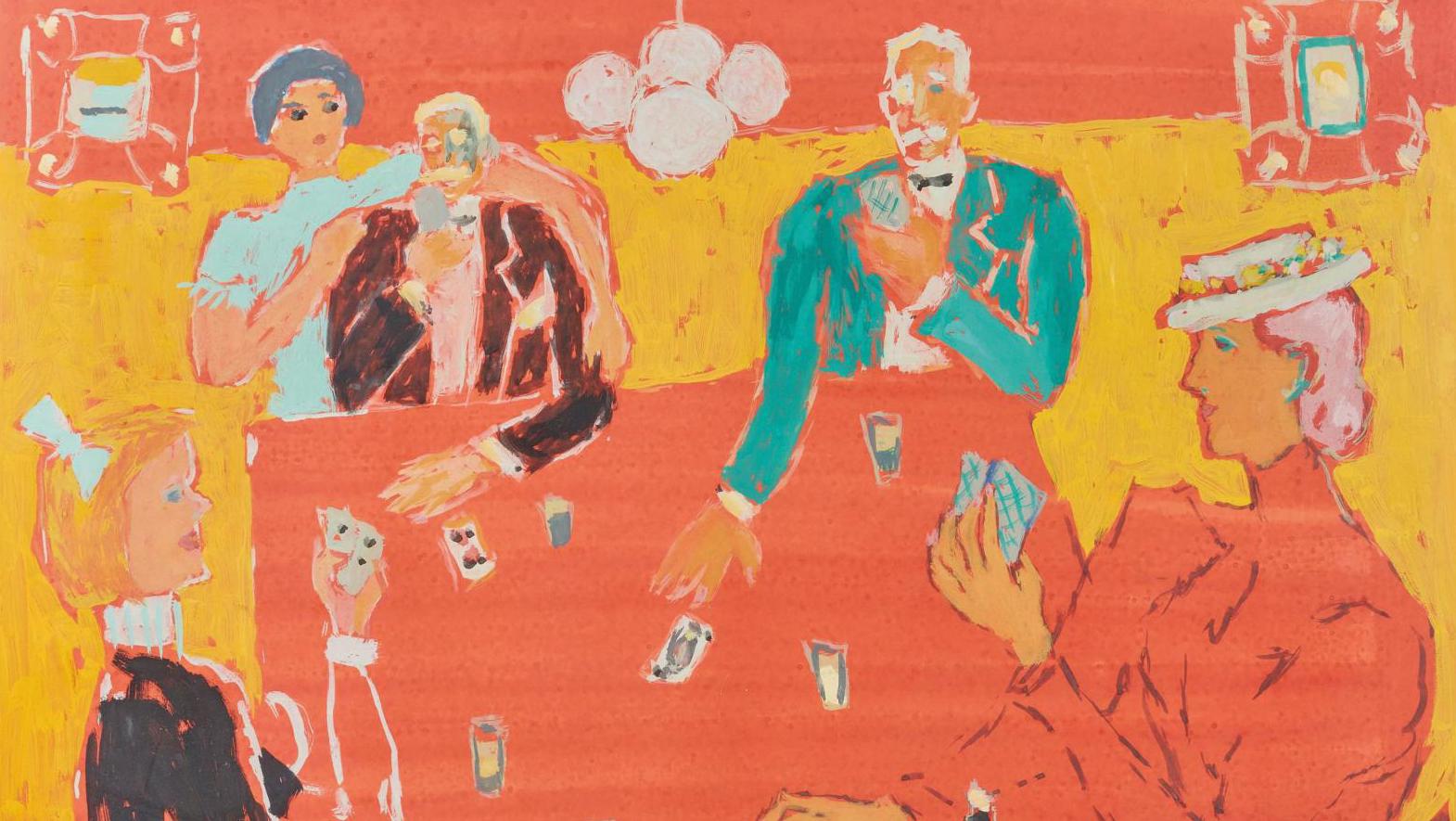While Turkish collectors were the first to revive interest in artists from their country who came to Paris to spice up modern art, they are now facing more rivals.
Fikret Moualla (1903-1967), La Partie de cartes (The Card Game), gouache on paper, 52 x 65 cm/20.5 x 25.6 in.
Paris, Drouot, November 17, 2020. Audap & Associés auction house
Result: €26,418
The School of Paris, in both its first and second forms, was a decided magnet for 20 th -century cosmopolitanism, and a remedy for nationalism. Its exponents regularly turn up in the art market, and we keep discovering artists from other walks of life. This time, we focus on the generation contemporary with the birth of the new Turkish state, which arose in 1923 from the ruins of the Ottoman Empire. Many responded to the siren call of modernism, especially after the Second World War, gravitating around the founding figure of Fikret Moualla (1903-1967), who arrived at the very end of 1938.
Two recently published books, including the catalogue raisonné of Fikret Moualla's paintings by Marc Ottavi and Kerem Topuz, trace the careers of these artists, shedding light on their aesthetic quest, their desire for independence and their need to root themselves firmly in the century. An invitation to follow them through Paris's cobbled streets into the smoky silence of their studios.
Fikret Moualla (1903-1967), Femme et vase de fleurs ( Woman and Vase of Flowers ), gouache on paper mounted on canvas, 48.5 x 65.5 cm/19 x 25.8 in. Paris, Salle V.V., September 18, 2020. Millon auction house Result: €35,100. Ms. Ritzenthaler.
Avni Arbas (1919-2003), La Montagne ( The Mountain ), 1963, oil on canvas, 113 x 194 cm/44.5 x 76.4 in. Neuilly, 26 October 2020. Aguttes auction house Result: €22,406.
The Eulogist of Streets and the Night The sale of the Weil-Thenons' collection dispersion—1,380 lots all told —was a marathon that…
com.dsi.gazette.Article : 23641
This article is for subscribers only
You still have 85% left to read.
